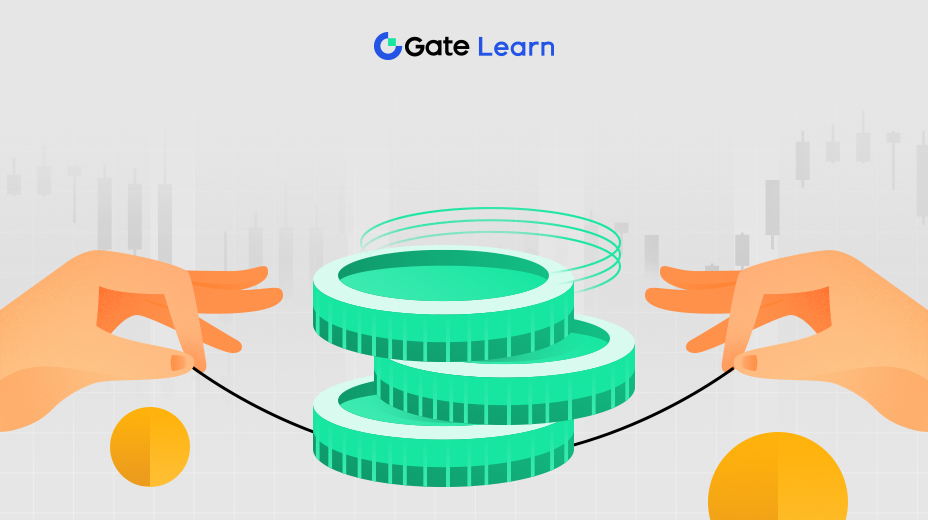Layer 1区块链项目对比及未来发展趋势
在本章中,我们将对整个课程中讨论的Layer 1区块链进行比较分析,包括它们各自的特点和优劣势。同时,我们将探讨Layer 1区块链领域的新兴趋势和发展,以及可扩展性、互操作性和治理模型等方面可能的进步,并为有兴趣投资Layer 1加密货币的个人提供宝贵见解。
Layer 1区块链的比较分析
作为第一个去中心化的加密货币,比特币为后续Layer 1区块链的发展铺平了道路。它以工作量证明(PoW)共识机制提供的强大安全性而为大众所熟知,但其可扩展性限制和相对简单的脚本功能导致了替代区块链的出现。
以太坊则引入了智能合约的概念,允许在其网络上构建可编程和去中心化的应用(DApp)。以太坊的图灵完备脚本语言Solidity能够创建复杂的智能合约,并推动了去中心化金融(比特币)和非同质化代币(NFT)生态系统的发展。
BNB是币安生态系统的原生代币,运行在币安智能链(BSC)上。BSC与以太坊虚拟机(EVM)兼容,旨在提供比以太坊更低的交易费和更快的区块确认,因而成功吸引了很多开发人员和用户。
Cardano以其专注于科学研究的模式和专为可扩展性和可持续性而设计的分层架构脱颖而出。通过采用权益证明(PoS)共识机制并结合Ouroboros等创新功能,Cardano旨在解决其他区块链面临的可扩展性和能效挑战。
Solana的与众不同之处在于其高吞吐量和低交易费,这是通过结合历史证明(PoH)和权益证明(PoS)共识机制来实现的。Solana实现了快速的交易确认,并支持各种去中心化应用。
Polkadot引入了一种实现区块链互操作性的创新方法,允许称为平行链的多个区块链安全地连接和共享数据。这种专注于互操作性的架构实现了跨链通信,并能够创建可以并行运行的专门区块链,增强了可扩展性和灵活性。
Avalanche采用子网模型来实现可扩展性和定制化。Avalanche通过将网络分割为子网,实现了水平扩展,其中每个子网都可以有自己的共识规则和虚拟机。这种方法使开发人员具有更大的灵活性,并能够创建自定义区块链环境。
Algorand强调安全性、可扩展性和去中心化。通过其纯权益证明(PPoS)共识机制,Algorand实现了快速的区块最终态确认和高吞吐量。其独特的共识算法确保了参与度、验证者的随机选择以及对区块链状态达成一致。
通过对这些Layer 1区块链进行对比分析,我们可以直观地看出它们各自的优势和劣势。安全性、可扩展性、去中心化、可编程性、互操作性和共识机制等因素有助于确定它们是否适合特定用例。了解它们的差异有助于开发人员、投资者和用户做出明智的决策,并为区块链技术的不断发展做出贡献。
Layer 1区块链的未来趋势
可扩展性是Layer 1区块链关注的重点。随着对去中心化应用(DApp)和交易量的需求增加,开发可扩展性解决方案的必要性也愈发明显。一个受到广泛认可的方向是实施Layer 2解决方案,如状态通道和侧链。Layer 2解决方案将主链的部分交易转移至链下,同时不损害安全性。此外,分片技术(将区块链划分为较小的部分,即分片)可以实现交易的并行处理,从而实现水平扩展。
互操作性是Layer 1区块链的另一个重要趋势。随着区块链和DApp数量的增长,对不同链之间进行无缝通信和资产转移的需求变得更加明显。互操作性协议,如Polkadot的跨链消息传递协议(XCMP)和Cosmos的跨链通信(IBC),通过建立安全高效的跨链通信通道实现了互操作性。这些协议促进了不同区块链之间的资产、数据甚至智能合约功能的传输。
Layer 1区块链中的治理模型也在不断发展,以确保去中心化决策和社区参与。传统的权益证明(PoS)区块链通常依赖于一小部分验证者来保障网络安全,而去中心化自治组织(DAO)和二次投票等较新的治理模型则致力于更均匀地将权力分配给网络参与者。DAO使利益相关者能够共同就协议升级、资金分配和其他治理事项做出决策。在二次投票中,投票权基于投票数进行加权,有利于促进公平,防止权利被少数人主导。
隐私功能的引入是Layer 1区块链的另一个新兴趋势。虽然区块链在本质上是公开透明的,但人们对隐私保护的需求也越来越强烈,以保护敏感信息。零知识证明(如zk-SNARK和zk-STARK)是一种可以在不泄露底层数据的情况下验证计算的加密技术。通过结合隐私功能,Layer 1区块链可以为用户提供更强的保密性和数据保护,为金融交易和敏感数据管理等诸多应用提供新的可能。
能源效率是区块链行业持续关注的问题。随着对区块链技术需求的增长,解决工作量证明(PoW)等能源密集型共识机制带来的环境问题也变得非常必要。Layer 1区块链正在探索替代共识机制,如权益证明(PoS)和委托权益证明(DPoS),这些机制可以显著降低能耗,同时仍能维护网络安全。此外,业内正在进行研究,以探索能源高效的共识算法和可持续的能源来源,用于区块链运营。
去中心化金融(DeFi)和非同质化代币(NFT)的兴起使Layer 1区块链受到越来越多的关注。基于Layer 1区块链构建的去中心化金融协议提供了各种金融服务,包括借贷和去中心化交易所等,免去了中介参与的必要。NFT则提供了独特的数字资产,可以代表数字艺术品、收藏品等的所有权。在未来,Layer 1区块链有望在DeFi和NFT领域见证进一步的创新和扩展,新的应用和用例将不断涌现。
标准化和不同Layer 1区块链之间的互操作性也可能成为大家关注的领域。目前正在建立智能合约、代币规范和通信协议的通用标准,以促进不同区块链之间的无缝集成和协作。有了这些标准,开发人员将能够构建可互操作的应用,实现多个网络之间的资产和数据交换。
现实世界数据和链下数据的连接也将迎来进一步发展。虽然区块链本质上是安全和不可篡改的,但它们无法直接访问现实世界数据。作为受信任数据源的预言机则弥合了区块链和链下数据之间的鸿沟,使智能合约能够与外部系统建立联系。使用预言机可以创建能够整合实时数据的去中心化应用,为供应链管理、保险和物联网等领域的应用开辟新的机会。
实际应用与投资考虑
Layer 1区块链在各个行业都有广泛的实际应用,其中一个重要的应用便是去中心化金融(DeFi)。在DeFi中,Layer 1区块链可以在不需要中介的情况下创建金融协议和服务。这些协议促进了借贷、去中心化交易和流动性挖矿等活动,为个人提供了更大的财务自主权和机会。此外,Layer 1区块链还可用于供应链管理,实现透明和可追溯的商品跟踪,确保真实性并打击假冒行为。
游戏行业是Layer 1区块链具有实际应用的另一个领域。通过整合非同质化代币(NFT),玩家可以拥有和交易独特的游戏内资产,在游戏生态系统中培育充满活力的数字经济。通过NFT,艺术家和内容创作者能够直接将他们的数字作品变现,绕过传统的中介机构,确保真实性和出处。
Layer 1区块链也在身份管理领域进行探索。通过利用区块链的不可篡改性和加密安全性,个人可以更好地控制自己的数字身份,确保隐私,降低数据泄露的风险。基于区块链的身份系统可以实现安全和自主的身份验证,金融、医疗和投票系统等多个领域都能从中受益。
投资Layer 1加密货币前需要仔细考虑多种因素。首先,需要评估Layer 1区块链的基本技术和架构。可扩展性、安全性、去中心化和社区采用等因素在确定区块链项目的长期潜力方面起着至关重要的作用。评估开发团队的专业能力、合作伙伴关系和发展路线图有助于深入分析项目的未来前景。
了解Layer 1区块链的经济模型和代币经济学也是投资前需要考虑的重要因素。代币分配、通货膨胀或通货紧缩机制、质押机会和治理权等因素会影响加密货币的价值和效用。此外,分析生态系统以及建立在区块链上的应用和合作伙伴关系有助于了解该项目的发展和采用潜力。
风险评估也是投资Layer 1加密货币的一个重要考量因素。区块链行业仍处于相对初级的一个阶段,并受到波动情况、监管变化和技术挑战等的影响。进行详尽的研究、多元化投资并及时了解最新发展和市场趋势对于管理风险并做出明智的投资决策至关重要。
同时,投资者必须清楚了解不同地区的监管环境和合规要求。监管框架可能因国家而异,因此必须遵守当地法律法规,确保投资的合法性和安全性。
此外,投资者应仔细考虑他们计划投资的Layer 1加密货币的流动性和交易量。高流动性和交易量提供了更便于进出市场的机会以及强大的价格发现机制。这些因素会显著影响投资体验和潜在回报。
要点
- 比特币被公认为第一个去中心化的加密货币,强调安全性和不可篡改性。
- 以太坊引入了智能合约和可编程性,支持去中心化应用(DApp)的开发。
- 币安币(BNB)助力币安生态系统和币安智能链(BSC)的发展,注重互操作性。
- Cardano(ADA)强调科学研究,旨在实现可扩展性和可持续性。
- Solana(SOL)具有可扩展的架构,强调高吞吐量和低费用。
- Polkadot(DOT)通过平行链实现了不同区块链之间的互操作性。
- Avalanche(AVAX)通过子网实现可扩展性,并专注于可定制的区块链部署。
- Algorand(ALGO)通过纯权益证明共识机制将安全性、可扩展性和去中心化结合起来。
- 分片、Layer 2协议和链下计算等扩容方案的出现旨在解决可扩展性挑战。
- 互操作性协议和跨链通信标准正在开发中,以实现不同区块链之间的无缝交互。
- 新的治理模式旨在确保区块链网络中的去中心化决策和社区参与。
- Layer 1区块链在去中心化金融(DeFi)、供应链管理、游戏和身份管理方面有实际应用。
- 投资Layer 1加密货币需要评估区块链项目的技术、架构、代币经济模型和生态系统。





